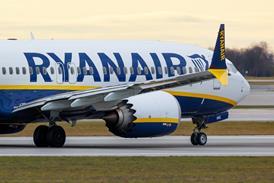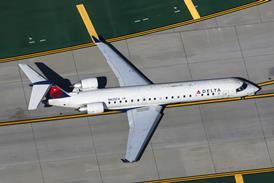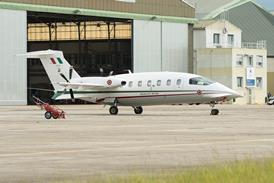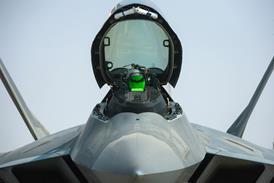GRAHAM WARWICK / WASHINGTON DC
Backlogs and fractional-ownership growth expected to sustain demand in near term
Honeywell believes business jet orders will recover slowly over the next 12-18 months, provided the US economy grows as projected. Deliveries, down from their peak in 2001, will decline again next year before resuming a steady climb, according to the company's 11th annual business aviation outlook.
Despite the significant slowing in orders, the US avionics, engine and equipment supplier still expects deliveries of 700 business jets this year, down from 769 in 2001, declining to 650 next year before recovering and climbing to almost 900 aircraft a year later in the decade.
Backlogs, new and derivative models and continued fractional-ownership growth will sustain demand in the near term, Honeywell believes.
Manufacturer backlogs still stand at more than 1,800 aircraft and few orders have been cancelled, says Honeywell, estimating that business jet deliveries over the next five years will be 3% higher than for the last five years, despite the 13% drop in shipments in the first half of this year. The company says flight department purchase expectations have fallen slightly in North America, but increased in Europe and Asia.
More than 7,600 aircraft, valued at over $121 billion, are projected to be sold from 2003 to 2012. A further 150 commercial transports configured as business jets, worth around $7.5 billion, are expected to be delivered.
In the emerging class of ultra-light, or personal, jets "potential demand for up to 8,000 aircraft over the next 10-15 years is feasible", Honeywell believes.
The forecast breaks the "traditional" business jet market down into sectors:
Long range and ultra-long range (for example, the Bombardier Global 5000, Gulfstream V): roughly 100 aircraft this year, growing in the second half of the decade to over 130 a year as new and upgraded models enter service, for a 10-year total of 1,150 aircraft. Large (eg Dassault Falcon 2000EX): annual deliveries of 70-90 aircraft, sustained by fractional demand, for a total of 800. Medium and medium-large (eg Gulfstream G200 Raytheon Hawker 800XP): annual deliveries growing from around 140 aircraft to about 250 by 2012 as new mid-size and super mid-size jets enter service. Light and light medium (eg Bombardier Learjet 45, Cessna Citation Bravo): near-term deliveries of 160-180 aircraft a year, growing to over 240 a year near the end of the forecast period as new models appear, for a 10-year total of nearly 2,100 aircraft.Very light (eg Citation CJ1): deliveries of 130-150 annually based on strong backlogs, for a total of 1,300 aircraft.Interest in new models remains high, says Honeywell, accounting for almost 44% of aircraft projected to be purchased over the next five years. Economic uncertainty has led to a slight dip in the purchase expectations of North American operators, which are expected to replace or expand about 22% of their fleet over the next five years, buying 71% of all new jets sold. European operators will replace 30% of their fleet, accounting for 14% of sales and marking a record rise in new jet purchase expectations. The Asian fleet will grow 7-8%, making up 9-10% of new aircraft demand; while Latin American operators will replace 18% of their fleet, taking just under 6% of all new jets.
Fractional growth is expected to continue, increasing from 7% of the world business jet fleet to 10-12%, and from 15-16% of annual deliveries into the 20% range, by 2012. Honeywell believes "only a small portion of the potential fractional business has been developed, and...continued growth in this segment is sustainable for years".
Source: Flight International























